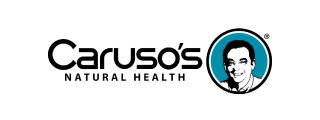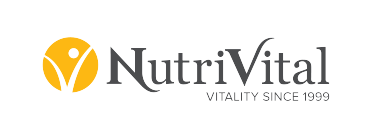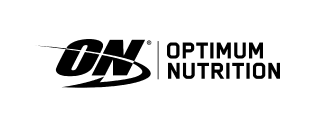
- Health advice
- Sep 25, 2014
Recent Articles
Liquid error (sections/article__main line 117): wrong number of arguments (given 3, expected 1..2)
Liquid error (sections/article__main line 140): wrong number of arguments (given 3, expected 1..2)
When people think of calcium, they think of milk and dairy products. Maintaining the correct levels is easy from our food without using milproducts is simple, easy and delicious. If you are dairy-free for health or ethical reasons, do not despair! There are many other good sources of calcium available to you. Some have even higher levels than milk.
What is calcium?
Calcium is a mineral that all humans need and is the most abundant mineral in the human body. Your bones and teeth need it to make them strong. Calcium circulates in fluids both inside and outside our cells; helping to maintain our blood pressure, aiding blood clotting, transmitting nerve impulses, hormone secretion and regulating of muscle contractions. The calcium in your bones is not permanently fixed there, it moves in and out of bones as required to help maintain these levels of calcium throughout the body. Keeping your bones strong depends more on preventing the loss of calcium from your body. Maintaining the correct levels of calcium is easy from your food and is simple, easy and delicious!Common sources of calcium
When people think of calcium, they think of milk and dairy products. Yes, these products are high in available/bioavailable calcium. Dairy sources of calcium are easily absorbed (more than 30% of the calcium content) and if you are not excluding dairy this is ok. If you are dairy-free for health or ethical reasons, do not despair! There are many other good sources of calcium available to you. Some have even higher levels of calcium than milk. Plant based calcium foods are plentiful with good bioavailability. Fish that contain their tiny bones such as salmon and sardines are also calcium rich. Good sources of calcium include:- Sesame seeds: gram for gram these tiny seeds have more calcium than milk!
- Green leafy vegetables such as broccoli, kale, mustard greens, turnip greens, and bok choy or Chinese cabbage. Beware not all leafy greens are created equal in calcium absorption!
- Salmon and sardines canned with their soft bones (yes, you need to eat the bones to get the goodness)
- Almonds, Brazil nuts, sunflower seeds and dried beans
- Blackstrap molasses
How much calcium in a serving?
Daily recommendations for calcium vary; Women 50+ and men 70+ require 1300mg/day, All other adults- 1000mg/day, children- 1000mg and adolescents- 1300mg. These targets are easily met through diet. One cup (250ml) of full cream milk provides 280mg of calcium. The following serving sizes will you help work out a combination for your daily calcium content:- 1 tablespoon (10g) sesame seeds = 88mg
- 85g of sardines with bones = 200 mg
- 70g (1 cup) shredded, cooked Chinese cabbage = 158mg
- 250g Broccoli= 100mg
- Chickpeas (boiled) 225g= 110mg
- 15gTahini (sesame seed paste) = 100mg
- ¼ cup/25 grams of almonds = 100 mg
- 1 medium orange = 50 mg calcium
- 1 medium baked sweet potato = 50 mg
- 1tbspn (20gm) blackstrap molasses = 40mg
What inhibits calcium absorption?
To get the best from your calcium avoid these anti-nutrients: Oxalic acid- found in spinach, rhubarb, dried beans and sweet potatoes. Also called oxalates, they inhibit calcium uptake. Do not rely on high oxalate foods for your regular calcium intake. Phytic acid (phytate)- found in many dried grains. Concentrated sources of phytate, such as wheat bran or dried beans, substantially reduce calcium absorption. Overnight/long soaking of dried beans prior to cooking can help to lower phytate content and increase the bioavailable calcium. Soft drink consumption- soft drinks are high in phosphorus, a mineral that works in balance with calcium. High intake of these carbonated sugar drinks increases the urinary losses of calcium. This is particularly important for children and teens who have high calcium demands for bone development, hormone production and tooth growth. Caffeine- increases urinary loss of calcium. Limit your daily coffee if you are wanting to increase your calcium levels. Salt- increases calcium loss. Reduce salt intake if you want to build your calcium levels.Strong bones- you need more than calcium
Calcium is not the only factor for strong, health bones. Vitamin K and potassium are required and coincidentally occur plentifully in the plant based foods mentioned earlier. The ‘sunshine vitamin’- D is also needed for calcium to do its work. Good bone density and bone mineral content are also strongly influenced by exercise, particularly in adolescence. It may be more important for adult bones than calcium intake. Get outside, get some sun and use those bones!Desley Hatfield
Desley is a degree qualified naturopath who wants to support you in your journey to good health with practical, easy to implement change.Mr Vitamins recommends
Nutra-Life Super Calcium Complete Gold
Formulated with Stimucal™ Hydroxyapatite, Nutra-Life Super Calcium Complete Gold contains co-factors necessary for the proper absorption and utilisation of Calcium by the bone, including Vitamin D, Manganese and Silica (from an extract of the herb Horsetail). This formula also contains Magnesium in its appropriate biological ratio to Calcium (one part Magnesium to every two parts Calcium) in order to capitalise its metabolism by the body. Find out more about Nutra-Life Super Calcium Complete Gold hereREFERENCES:
- Campbell, T. M. and Thomas Campbell, T.M. (2014). How to Get Calcium Without Dairy. Center for Nutrition Studies. Available at: http://nutritionstudies.org/how-to-get-calcium-without-dairy/ .
- Diet, C. (2017). Calcium in diet: MedlinePlus Medical Encyclopedia. Medlineplus.gov. Available at: https://medlineplus.gov/ency/article/002412.htm .
- Linus Pauling Institute. (2014). Calcium. Available at: http://lpi.oregonstate.edu/mic/minerals/calcium .
Recent Articles
Liquid error (sections/article__main line 218): wrong number of arguments (given 3, expected 1..2)
Liquid error (sections/article__main line 242): wrong number of arguments (given 3, expected 1..2)
Related Articles
Liquid error (sections/article__main line 267): invalid url input
Read more
10 min read
Sep 25, 2014
Diabesity: It all about prevention! Part 2
Recently Viewed
- ${ variant.price | currencyFromCents } | ${ variant.title } ${ variant.price | currency } | ${ variant.title }
Sale















